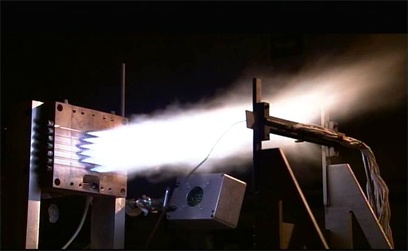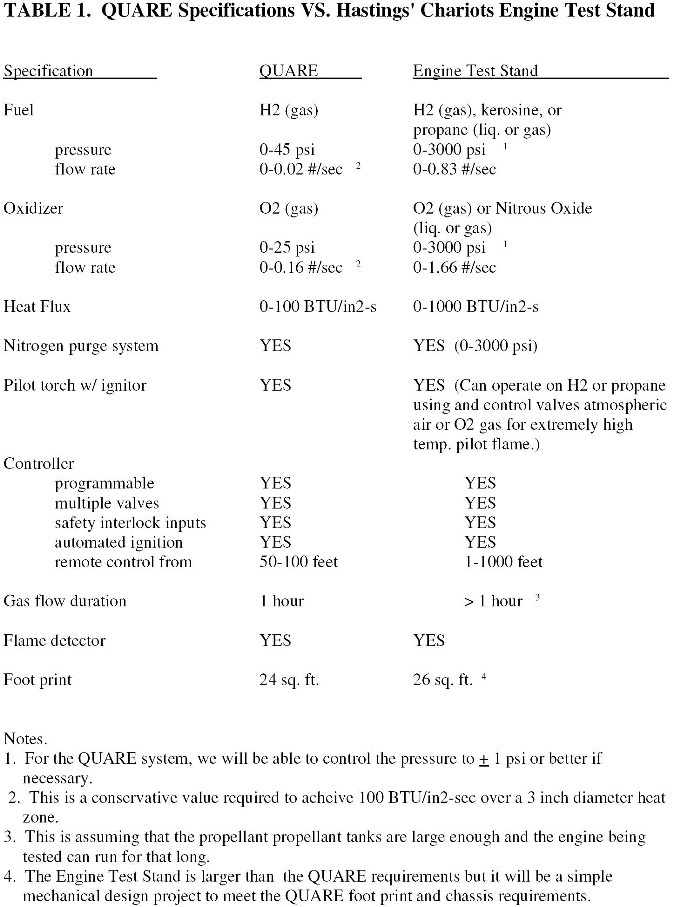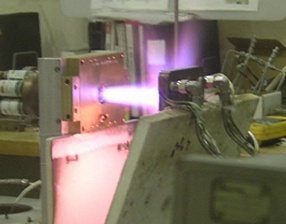Liquid Rocket
Propulsion
Why Liquid Rocket Propulsion?
With current and near future technology, liquid propulsion has
several mission critical advantages over solid and hybrid
propulsion.
1. Specific impulse, Isp. Isp as high as a 455.
2. Low cost fuel and oxidizer. As low as $0.25 per pound.
3. Throttling and pulsing.
Wether you need the highest performance for your single
mission or the best cost effectiveness for a reusable
application, liquid propulsion technology has a proven track
record which may be your best solution. Examples of projects
which are well suited for liquid rocket propulsion are:
- launch vehicles,
- sounding rockets,
- positioning thrusters,
- "space tourism" rockets,
- lunar or mars "hoppers,"
- umanned aerial vehicles (UAV),
- microsatellites and nanosatellites,
- scattering of remote sensors (terrestrial, lunar or Mars), and
- many more.
Hastings' Chariots is committed to advancing space
technology with liquid rocket propulsion. Contact us to
see if our products or services can benefit your project.
Hastings' Chariots' 1000 pound
thrust liquid rocket engine is
shown on the left being tested on
Hastings' Chariots rocket engine
test stand. The engine is
designed to burn kerosene,
natural gas, biodiesel or
hydrogen. Oxygen, hydrogen
peroxide or nitrous oxide can be
used as the oxidizers.
The Quick Access Rocket
Exhaust (QARE) is shown on
the right testing a coupon to
simulate a rocket engine
combustion chamber
environment for materials
testing. The QARE rig (shown
below) was engineered and
manufactured by Hastings'
Chariots for NASA Glenn
Research Center (GRC). The
system is engineered for
hydrogen and oxygen. Photos
courtesy NASA GRC.
Photo courtesy of NASA GRC.
Photo courtesy of NASA
GRC.
The QARE
system can be
configured with
different nozzels
for a variety of
applications as
shown at the
left.
Photo courtesy of NASA
GRC.
Copyright © 2002-2012. All Rights Reserved. Hastings'
Chariots.
T
M















